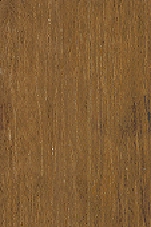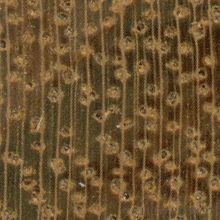
TERAP (Artocarpus scortechinii)
Trade Name
Terap
Scientific Name
Artocarpus scortechinii King
Family
MORACEAE
Common Names
Terap hitam (Malaysia); Nagka pipit (Malaysia)
Description Of The Tree
Botanical Description
It is a medium-sized to fairly large evergreen tree up to 35 m tall.
Natural Habitat
This species occurs scattered in lowland evergreen forests, up to 750 m of altitude.
Wood Identification
Anatomic Description Of Wood
Wood diffuse porous. Tangential diameter of vessel lumina 200 micras or more (large). Colored deposits in heartwood vessels. Vessels per mm2 less than 6 (rare). Vessel-ray pits reticulate and/or foraminate. Simple perforation plates. Axial parenchyma aliform. Axial parenchyma confluent. 4 to 10 rays per mm (medium). Larger rays more than 4 seriate. Sheath cells. Oil and/or mucilage cells associated with the axial and/or ray parenchyma (idioblasts). Body ray cells procumbent with mostly 2 to 4 rows of upright and/or square marginal cells (Kri Septate fibers present. Fibers with distinctly bordered pits.
-
 Wood Macro Photo Tangential Plane
Wood Macro Photo Tangential Plane
-
 Wood Micro Photo Of Transversal Section
Wood Micro Photo Of Transversal Section
Availability
Cites Status
Unrestricted
General Wood Description
Color
The heartwood is yellow to pale yellow-brown and usually demarcated from the paler sapwood.
COLOR INDEX (1=Black, 7=Light yellow,white)
5
Grain
It has interlocked grain.
Texture
A coarse texture is reported in this species.
Natural Durability
It is classified as non-durable under tropical conditions when exposed to the weather or in contact with the ground.
Natural durability index (1= Very high durability, 7=Vey low durability)
5
Internal Growth Stresses
Timber of this species contains residual stresses.
Resistance To Impregnation
This species is reported to be permeable to moderately permeable.
Wood Physical Properties
Basic Density or Specific Gravity (O.D. weight/vol. green) (g/cm³)
0.53
Air-dry Density (Weight and volume at 12%MC) (g/cm³)
0.57
Total shrinkage Tangential (Saturated to 0%MC) (%)
8.3
Total shrinkage Radial (Saturated to 0%MC) (%)
4.5
Recommended Dry Kiln Schedule
JP-25
Dimensional stability ratio (Total Tangential Shrinkage %/Total Radial Shrinkage %)
1.9
Wood Chemical Properties
Wood Mechanical Properties
Bending Strength (MOR),12%MC (kgf/cm²)
758
Stiffness (MOE) 12%MC (kgf/cm²)
89367
Compression parallel to fiber 12%MC (kgf/cm²)
421
Janka hardness (side) 12%MC (kgf)
338
Janka hardness (end grain) 12%MC (kgf)
439
Workability
Sawing
Cutting operations are generally easy unless interlocked grain is found.
Rotary Veneer Cutting
This species is reported to have good characteristics for lamination.
Sliced Veneer
This species is reported to have good characteristics for lamination.
Machining
Machining of this species is reported to be easy.
Planing
The wood can be planed to a smooth surface, but there is some picking up on the radial face.
Boring
Boring is reported to be easy.
Nailing
This species is reported to have a good nailing behavior.
Gluing
It has a good behavior in gluing.
Finishing
Finishing is easy but the surfaces are rough even if filled.
REFERENCED USES
End Uses Summary
HOUSING GENERAL, boards, panelling, FURNITURE AND CABINETS, PLYWOOD AND VENEER, cores, PACKING, pallets
General Housing
- 10 - Silica in Timbers
Boards
- 13 - Dry kiln schedules for commercial woods. Temperate and tropical. Section III. Latin American (Mexico, Central, and South America) Woods–Conventional Temperatures
Paneling
- 18 - W3TROPICOS Missouri Botanical Garden
Furniture Cabinets
- 21 - Tropical timbers of the world. Part III-Southeast Asian and Oceanian Species.
Panels, Veneers
- 25 - Directory of Timber Trade Malaysia
Cores
- 27 - Embassy of Brazil in Japan
Packing
- 45 - Recopilación y Análisis de Estudios Tecnológicos de Maderas Peruanas
Pallets
- 48 - The strength properties of timbers
Please Provide Information To View Producer Information